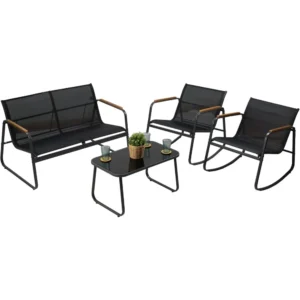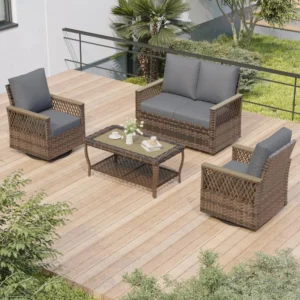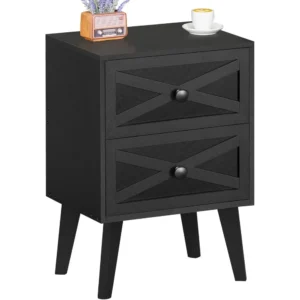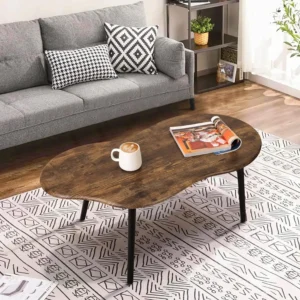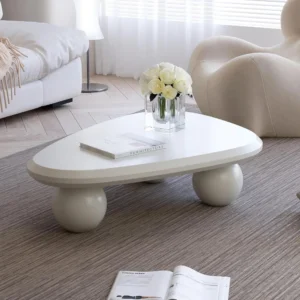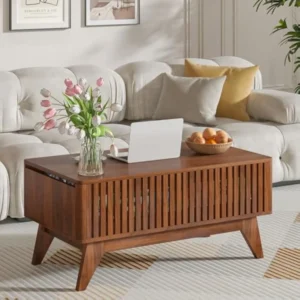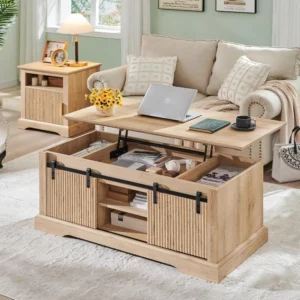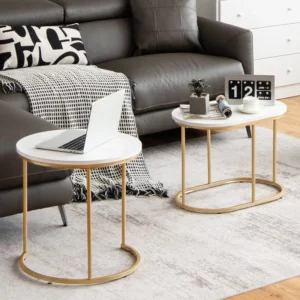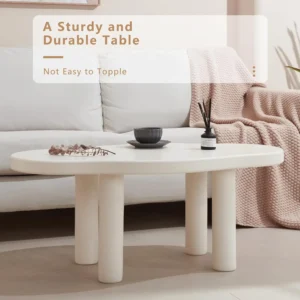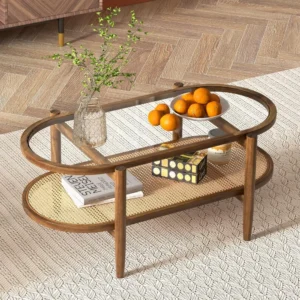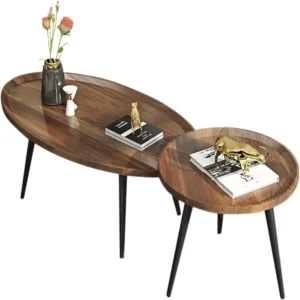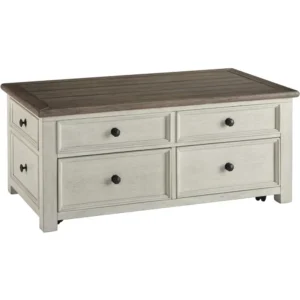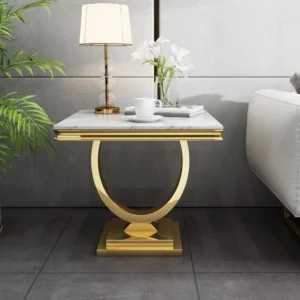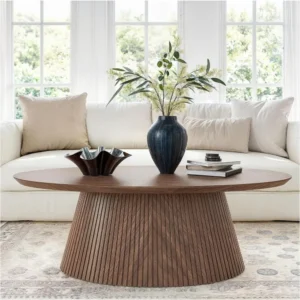Mid-Century Modern Coffee Tables
Find authentic mid-century modern coffee tables. Their iconic clean lines and organic shapes create a stylish focal point. They anchor your living space, serving everyday moments beautifully.
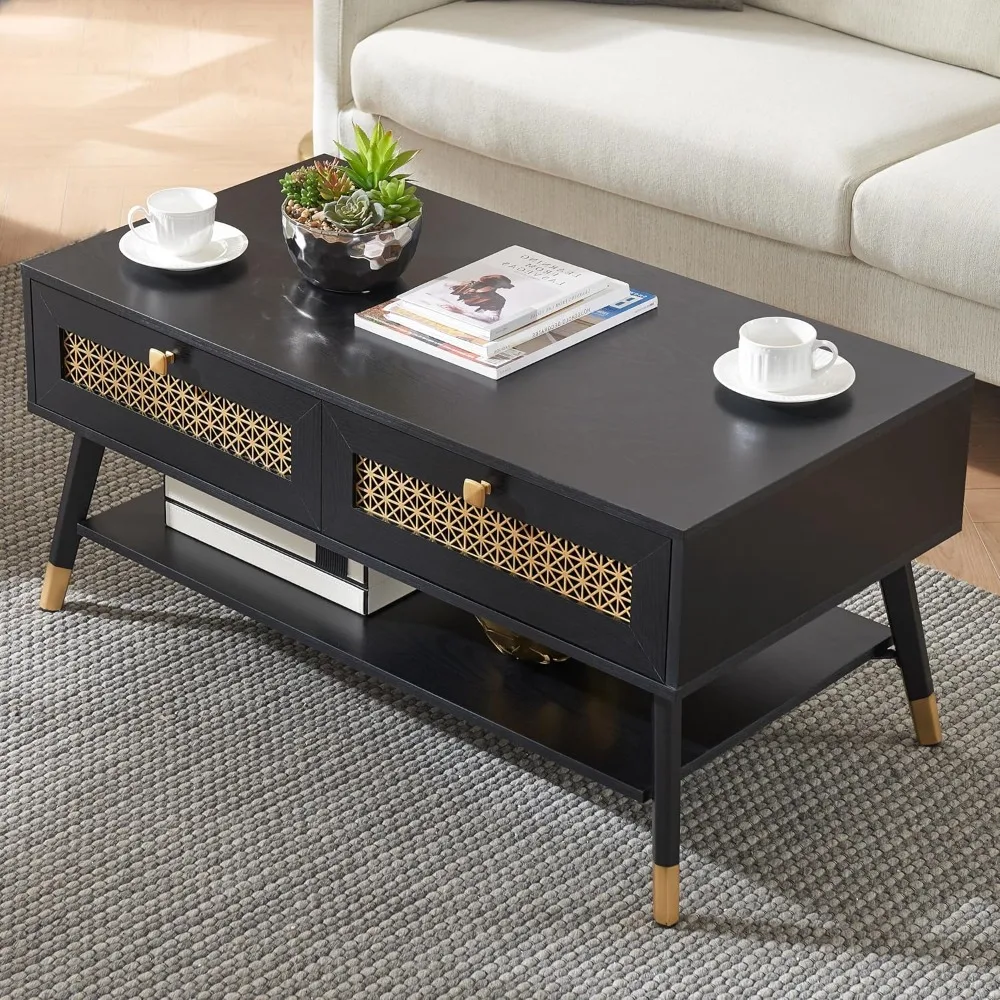
Showing 1–12 of 160 results
Mid-Century Modern Glass Top Coffee Tables, Mid-Century Modern Rectangular Coffee Tables
Price range: $282.64 through $452.21 Select options This product has multiple variants. The options may be chosen on the product pageMid-Century Modern Rectangular Coffee Tables
Price range: $1,437.66 through $1,523.95 Select options This product has multiple variants. The options may be chosen on the product pageMid-Century Modern Black Coffee Tables, Mid-Century Modern Lift Top Coffee Tables, Mid-Century Modern Rectangular Coffee Tables
$521.83 Select options This product has multiple variants. The options may be chosen on the product pageMid-Century Modern Black Coffee Tables, Mid-Century Modern Small Side & End Tables, Mid-Century Modern Square Side & End Tables, Mid-Century Modern Vintage Side & End Tables
$156.96 Select options This product has multiple variants. The options may be chosen on the product pageMid-Century Modern Small Coffee Tables, Mid-Century Modern Solid Wood Coffee Tables, Mid-Century Modern Vintage Coffee Tables
$225.70 Select options This product has multiple variants. The options may be chosen on the product pageMid-Century Modern Small Side & End Tables, Mid-Century Modern White Coffee Tables
$664.43 Select options This product has multiple variants. The options may be chosen on the product pageMid-Century Modern Lift Top Coffee Tables, Mid-Century Modern Rectangular Coffee Tables
$470.09 Select options This product has multiple variants. The options may be chosen on the product pageMid-Century Modern Lift Top Coffee Tables, Mid-Century Modern Rectangular Coffee Tables
$545.67 Select options This product has multiple variants. The options may be chosen on the product pageMid-Century Modern Nesting Coffee Tables, Mid-Century Modern Nesting Table Sets
$361.45 Select options This product has multiple variants. The options may be chosen on the product pageMid-Century Modern Round Side & End Tables, Mid-Century Modern White Coffee Tables
$397.57 Select options This product has multiple variants. The options may be chosen on the product pageMid-Century Modern Glass Top Coffee Tables, Mid-Century Modern Oval Coffee Tables
$466.09 Select options This product has multiple variants. The options may be chosen on the product pageMid-Century Modern Nesting Coffee Tables, Mid-Century Modern Nesting Table Sets, Mid-Century Modern Oval Coffee Tables, Mid-Century Modern Round Coffee Tables
$268.47 Select options This product has multiple variants. The options may be chosen on the product page
Showing 1–12 of 160 results
What Makes Mid-Century Modern Coffee Tables Timeless?
Mid-century modern coffee tables stand as iconic centerpieces in contemporary interior design, offering a perfect marriage of form and function that continues to captivate design enthusiasts decades after their inception. These distinctive pieces embody the innovative spirit of the post-war design movement, featuring clean lines, organic shapes, and mixed materials that create visual interest without overwhelming a space.
At Hearth Forms, we’ve dedicated ourselves to curating authentic mid-century modern pieces that honor the original design principles while complementing today’s living spaces. Our collection celebrates the movement’s emphasis on accessibility, functionality, and timeless beauty—qualities that allow these tables to enhance virtually any interior style, from minimalist to eclectic.
What makes these pieces particularly remarkable is their ability to simultaneously serve as practical surfaces for daily life and sculptural elements that transform a room. The genius of mid-century design lies in this dual purpose: creating furniture that fulfills its function beautifully while standing as art in its own right. As you explore our collection, you’ll discover how these distinctive tables can become the anchor for your entire living space, bringing warmth, character, and historical significance to your home.
Signature Design Elements of Mid-Century Modern Coffee Tables
The hallmark of authentic mid-century modern coffee tables lies in their distinctive design elements—features that arose from both aesthetic innovation and practical necessity during the mid-century period. These signature characteristics not only define the style but continue to influence contemporary furniture design today.
Perhaps most recognizable are the tapered legs that seem to defy gravity, often angled outward to create a sense of dynamic movement while providing stable support. This splayed leg design, sometimes called “peg legs,” creates negative space beneath the table that contributes to the light, airy feeling these pieces bring to a room.
The material palette of mid-century coffee tables reflects the period’s embrace of both natural and manufactured materials. Walnut reigns as the quintessential wood choice, prized for its rich grain and warm tones, while teak offers exceptional durability with a honey-gold patina that deepens beautifully with age. These warm woods often appear alongside glass surfaces, brass accents, and occasional marble elements—a juxtaposition that creates visual tension and interest.
The silhouettes themselves frequently embrace organic shapes inspired by nature, featuring soft curves and rounded edges that contrast with more geometric forms. Many pieces feature ingenious innovations like cantilevered elements, nesting capabilities, or integrated storage—all hallmarks of the period’s focus on multifunctionality and space efficiency.
Silhouettes & Shapes
Mid-century modern coffee tables come in a variety of iconic silhouettes, each bringing distinct character to a living space. The rectangular table represents the most versatile option, providing ample surface area while maintaining clean lines that complement longer sofas and larger seating arrangements.
For smaller spaces or rooms with multiple conversation areas, round and oval tables offer smoother traffic flow without sharp corners, softening the room’s overall appearance. These curved forms particularly shine in spaces with many angular elements, providing welcome visual relief.
More distinctive silhouettes include the organic “kidney” shape, the elongated “surfboard” design that creates a dramatic focal point, and triangular forms that maximize space while adding geometric interest. Each shape influences not just aesthetics but also how people move through and interact within the space—a key consideration when selecting the perfect piece for your home.
Materials & Construction
The enduring appeal of mid-century modern coffee tables stems largely from their exceptional materials and craftsmanship. Quality pieces feature solid hardwoods like walnut, teak, oak, and occasionally rosewood or birch—materials selected for their beauty, stability, and longevity. These natural wood elements often appear alongside secondary materials including tempered glass, brass hardware, steel supports, and sometimes marble accents.
Traditional construction methods are equally important in authentic pieces. Look for mortise-and-tenon joinery, finger joints, and thoughtfully applied veneers that showcase beautiful grain patterns while enhancing structural stability. Many tables feature solid wood construction for main components, ensuring decades of use with proper care.
The craftsmanship becomes particularly evident in the details: perfectly mitered corners, smooth drawer operation, and consistently applied finishes that protect while enhancing the natural beauty of the materials. These quality indicators not only ensure longevity but connect modern reproductions to the design heritage they honor.
Choosing the Perfect Size & Shape for Your Space
Finding the ideal mid-century modern coffee table for your living space requires consideration of both proportions and functionality. A well-chosen table should maintain approximately two-thirds the length of your sofa, creating visual balance while providing accessible surface area for all seating positions.
For standard height considerations, most mid-century coffee tables stand between 16-18 inches (40-45 cm) tall—slightly lower than contemporary designs to complement the lower-slung seating common in mid-century furniture. Allow at least 14-18 inches (35-45 cm) of clearance between the table and surrounding seating to enable comfortable movement.
In smaller spaces, round or oval tables eliminate sharp corners that interrupt flow, while rectangular tables maximize usable surface in larger rooms. Consider your room’s traffic patterns—kidney-shaped or surfboard designs can direct movement through a space while adding distinctive character.
For sectional arrangements, consider nesting tables or modular designs that can be reconfigured as needed. Remember to evaluate your specific needs: do you require storage? Will the table serve primarily decorative purposes or need to accommodate frequent dining or work activities? These functional considerations should guide your selection alongside aesthetic preferences.
Styling Your Mid-Century Modern Coffee Table
Styling a mid-century modern coffee table offers the perfect opportunity to showcase both personal style and design sensibility. The key lies in striking the balance between curated decoration and functional space—honoring both form and function as the original designers intended.
For a classic approach, embrace the “less is more” philosophy with a few carefully selected items: perhaps a substantial art book, a sculptural ceramic vessel, or a small collection of natural elements like wood or stone. Create visual interest through varying heights and textures while maintaining substantial open surface area.
Plants bring welcome organic elements that complement the natural materials in mid-century tables—consider low-maintenance varieties like succulents in a geometric planter. For functional styling, incorporate useful items with design merit: a distinctive box for remote controls, a unique tray to corral smaller objects, or a sculptural candleholder that doubles as art.
The most successful styling approaches consider negative space as an essential element rather than empty area to fill. This restraint honors the clean lines and intentional design of the table itself, allowing its craftsmanship and materials to remain visible rather than buried beneath excessive decoration.
The Hearth Forms Difference: Quality & Authenticity
At Hearth Forms, our approach to curating mid-century modern coffee tables begins with an unwavering commitment to design integrity and quality construction. Our team evaluates each piece against exacting standards that honor the principles of mid-century design while ensuring exceptional long-term value.
This evaluation process examines multiple quality indicators, from the selection of premium hardwoods with consistent grain patterns to the precision of joinery and overall construction techniques. We verify that proportions reflect authentic mid-century specifications—not merely contemporary interpretations that approximate the style.
Our standards extend beyond materials to include the intangible qualities that define exceptional design: the perfect balance of form and function, the thoughtful details that enhance usability, and the timeless appeal that allows these pieces to transcend trends. The result is a collection of coffee tables that serve as investment-worthy focal points, bringing authentic mid-century modern design principles into contemporary living spaces.
Discover Related Mid-Century Modern Furniture
A thoughtfully designed living space often incorporates complementary furniture pieces that share design language while serving different functions. To create a cohesive mid-century inspired room, explore our collection of side tables that echo the materials and silhouettes of our coffee tables while providing additional surface area beside seating.
Console tables extend the mid-century aesthetic to entryways and behind sofas, often featuring the same slender proportions and tapered legs found in coffee tables. For dining spaces that harmonize with your living area, consider dining tables that incorporate similar wood tones and construction techniques.
The beauty of mid-century design lies in its cohesive approach to interior spaces—where pieces relate without matching exactly, creating visual harmony through shared materials, proportions, and design principles. By extending these elements throughout your home, you create a unified environment that honors one of design history’s most enduring and influential movements.

